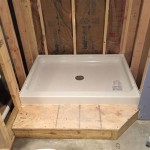Installing a Drop Ceiling in a Basement
Basements are often neglected and underutilized spaces in homes, but they can be transformed into comfortable and functional living areas with the right renovations. One of the most effective ways to improve the appearance and functionality of a basement is to install a drop ceiling.
Drop ceilings are suspended from the original ceiling using a grid of metal or wood supports. They offer several advantages over traditional drywall ceilings, including:
- Ease of installation: Drop ceilings are relatively easy to install compared to drywall ceilings. They do not require extensive framing or drywall work, and they can be installed by homeowners with basic carpentry skills.
- Cost-effectiveness: Drop ceilings are a more affordable option than drywall ceilings, especially in basements where ceiling heights are often low.
- Accessibility: The tiles in drop ceilings can be easily removed for access to plumbing, electrical, and other utilities. This makes it easy to make repairs or changes in the future.
Materials Required:
- Ceiling grid (metal or wood)
- Ceiling tiles
- Suspending wires
- Wall molding
- Screws or nails
- Drill or screwdriver
- Level
Step-by-Step Instructions:
1. Plan the layout: Determine the size and shape of the drop ceiling and mark the location of the grid supports on the ceiling. Ensure that the grid will be level and perpendicular to the walls.
2. Install the grid: Attach the grid supports to the ceiling using screws or nails. Make sure the supports are spaced evenly and securely attached.
3. Suspend the wires: Connect the suspending wires to the grid supports. The wires should be taut and level. Adjust the length of the wires to ensure that the ceiling will hang at the desired height.
4. Install the tiles: Place the ceiling tiles into the grid supports. The tiles should fit snugly and rest on the supports without sagging.
5. Install wall molding: Attach the wall molding around the perimeter of the ceiling to cover the gap between the ceiling and the walls.
6. Finish the edges: If necessary, trim any excess ceiling tiles or wall molding to ensure a clean and finished appearance.
Tips:
- Use a level to ensure that the grid and ceiling are level throughout the installation.
- Tighten the suspending wires securely to prevent sagging.
- Choose ceiling tiles that are durable and easy to clean.
- Consider adding lighting fixtures to the drop ceiling for additional illumination.
- If you are not confident in your DIY skills, it is recommended to hire a professional installer.
Conclusion:
Installing a drop ceiling is a practical and cost-effective way to improve the appearance and functionality of a basement. By following these step-by-step instructions, you can create a professional-looking ceiling that will enhance the overall ambiance of your basement.

How To Install A Drop Ceiling 14 Steps With S Wikihow

How To Install A Drop Ceiling Ceilings Armstrong Residential

A Drop Ceiling That Looks Better Than Drywall How To Install In Basement Diy

How To Install A Drop Ceiling 14 Steps With S Wikihow

How To Easily Install A Drop Ceiling

How To Install A Drop Ceiling 14 Steps With S Wikihow

Installing Woodhaven Planks And Hiding Drop Ceiling Grid Sawdust Girl
How To Install Drop Ceilings Easy Guide Kanopi By Armstrong

New Hanging System Makes It Easy To Install A Drop Ceiling Yourself Youtube

How To Install A Suspended Ceiling
See Also








